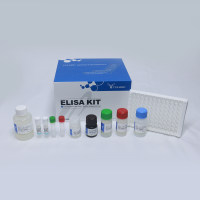Clinical Utility of Tumor Markers in the Management of Non-Small Cell Lung Cancer
互联网
互联网
相关产品推荐

Hemagglutinin/HA重组蛋白|Recombinant H1N1 (A/California/04/2009) HA-specific B cell probe (His Tag)
¥2570

Nonstructural protein 2/NS2重组蛋白|Recombinant H1N1(A/Puerto Rico/8/34/Mount Sinai)Non-structural Protein 2/NS2
¥2570

促销中大鼠肿瘤坏死因子α(TNF-α)/Rat TNF-α/tumor necrosis factor (TNF superfamily,member 2)/Tnf;Tnfa;Tnfsf2;Tumor necrosis factor;Cachectin;TNF-alpha;Tumor necrosis factor ligand superfamily member 2;TNF-a) [Cleaved into: Tumor necrosis factor;membrane for/TNF/ELISA试剂盒
¥3420¥3800

赛默飞世尔Thermo Fisher BRUSH UTILITY RED 20,3 CM 货号:T_70311795229
¥70

Pyruvic-1-¹³C 酸,99124-30-8,API for Clinical Studies, ≥99 atom% ¹³C,阿拉丁
¥34800.90
相关问答

